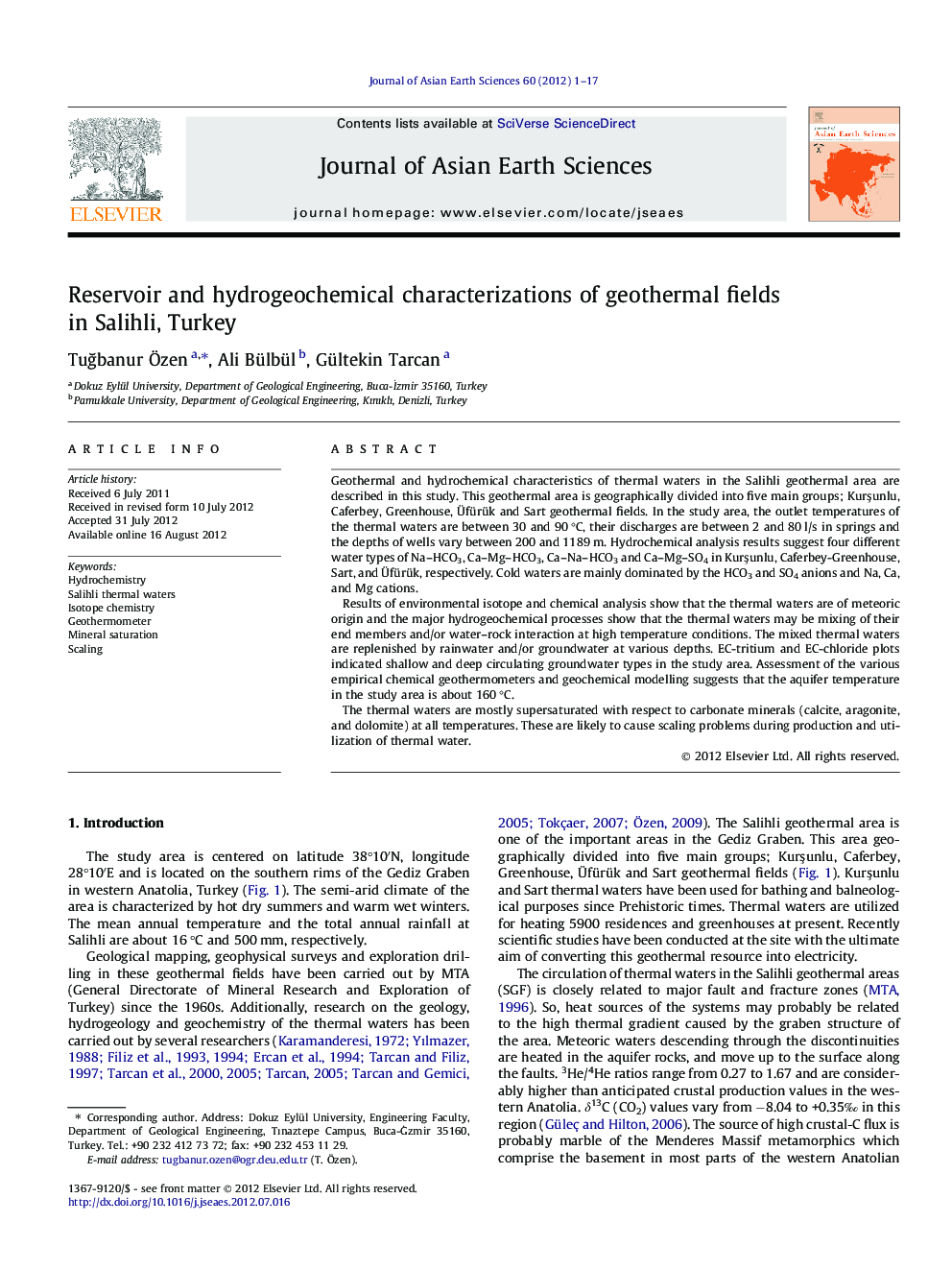| Article ID | Journal | Published Year | Pages | File Type |
|---|---|---|---|---|
| 4731077 | Journal of Asian Earth Sciences | 2012 | 17 Pages |
Geothermal and hydrochemical characteristics of thermal waters in the Salihli geothermal area are described in this study. This geothermal area is geographically divided into five main groups; Kurşunlu, Caferbey, Greenhouse, Üfürük and Sart geothermal fields. In the study area, the outlet temperatures of the thermal waters are between 30 and 90 °C, their discharges are between 2 and 80 l/s in springs and the depths of wells vary between 200 and 1189 m. Hydrochemical analysis results suggest four different water types of Na–HCO3, Ca–Mg–HCO3, Ca–Na–HCO3 and Ca–Mg–SO4 in Kurşunlu, Caferbey-Greenhouse, Sart, and Üfürük, respectively. Cold waters are mainly dominated by the HCO3 and SO4 anions and Na, Ca, and Mg cations.Results of environmental isotope and chemical analysis show that the thermal waters are of meteoric origin and the major hydrogeochemical processes show that the thermal waters may be mixing of their end members and/or water–rock interaction at high temperature conditions. The mixed thermal waters are replenished by rainwater and/or groundwater at various depths. EC-tritium and EC-chloride plots indicated shallow and deep circulating groundwater types in the study area. Assessment of the various empirical chemical geothermometers and geochemical modelling suggests that the aquifer temperature in the study area is about 160 °C.The thermal waters are mostly supersaturated with respect to carbonate minerals (calcite, aragonite, and dolomite) at all temperatures. These are likely to cause scaling problems during production and utilization of thermal water.
► Hydrogeochemical characteristics of the Salihli geothermal systems were studied. ► Reservoir chemistry and reservoir temperature were calculated. ► Results show that major hydrogeochemical processes are the water–rock interaction. ► Hydrogeochemical model shows shallow and deep thermal aquifer systems. ► Scaling tendencies for waters indicate carbonate precipitation.
